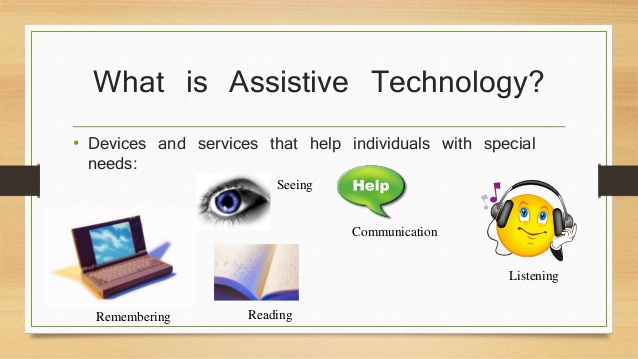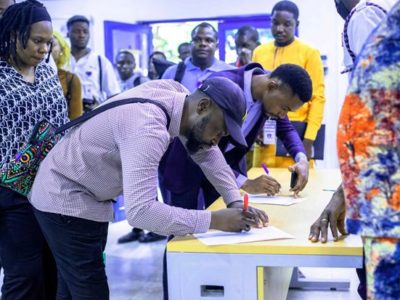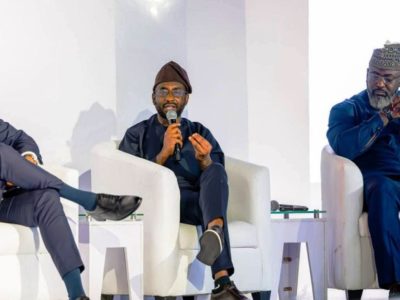Persons with disabilities represent 15% of the world’s population, estimates the World Health Organization. This amounts to nearly one billion people who are more likely to experience barriers to education, poorer health outcomes, lower levels of employment, and higher poverty rates.
Assistive technologies have proven to be life-changing for persons with disabilities. But how can we ensure that information and communication technologies (ICTs) assist persons with disabilities and do not further widen the gaps?
Several solutions were presented at the first-ever Accessibility Day on the opening day of the World Summit on the Information Society (WSIS) Forum.
“Over a billion people live with disabilities. And 90% in developing countries do not have access to the technologies they need,” warned Alex Young, from the UK’s Department for International Development (DFID). He discussed how assistive technologies in developing countries, including digital technologies, need to be prioritized if we are to achieve the Sustainable Development Goals. He described how a focus on innovation, user-centered design, open market access and partnerships are making progress.
“Accessibility is not a barrier to innovation,” noted Dr. Akber Gardezi, from the Inter Islamic Network on Information Technology, who works to promote inclusive innovation policies in Pakistan and throughout the Arab world. He noted that we must include perspectives and innovations from persons with disabilities in any solution.
Throughout Accessibility Day several panelists reaffirmed this key point: “Nothing about us, without us.”
GET CERTIFIED: ITU Self Paced Online Training on ICT Accessibility
An interactive hands-on workshop, ‘Digital technologies and accessibility: from rhetoric to reality,’ led by Tim Unwin, the UNESCO Chair in ICT4D, produced a mind map for collective actions to ensure the ICTs are accessible to all. These included: more robust policies and laws, more training/education and ensuring that technologies are inclusive or universal by design.
Monica Halil Lövblad, Director of Copyright Management Division at WIPO, discussed the role of inclusive and innovative policy-making and the effectiveness of the Marrakesh Treaty which provides exceptions to copyright law for the production of works of accessible format. As she explained, 54 contract parties and 81 countries are covered by this treaty and it has allowed for thousands of books and materials previously unavailable to be made accessible.
Persons with disabilities are covered by numerous laws, including the Convention on the Rights of Persons with Disabilities (CRPD), and specifically Article 9 of the CRPD instructs countries to take measures to ensure persons with disabilities access ICTs on an equal basis. However, in many countries essential ICT services remain inaccessible for people with disabilities.
Ensuring ICTs are accessible to all
ITU is a specialized agency of the United Nations system, working to ensure that ICTs are accessible to all.
In a session dedicated to Telecom Relay Services (TRS), several participants discussed the value of ITU’s standard F. 930 as the basis for National Telecom Relay Services.
READ MORE: How the Wayfindr Open Standard uses new tech to help the visually impaired
A Telecom Relay Service is an essential service for those who are deaf or hard of hearing to use traditional telephones. It requires an intermediary, called a Communication Assistant (CA), to relay messages from one user to another in real-time.
Tomoko Tsutsui, from the Nippon Foundation in Japan noted that while a TRS is considered an essential service, only 25 countries currently have a TRS as part of their national infrastructure. Many countries are now on the journey to implementing a TRS, including Video Relay Services, and are looking to ITU to help with capacity building and knowledge exchange from countries that have successfully implemented TRS, such as Columbia and Canada.
LEARN MORE: Prevent hearing loss by following ITU’s Safe Listening Standard
For example, Canada has hosted a teletypewriter relay service (TTY) since 1985, and has recently launched a nationwide Video Relay Service for those who are deaf or hard of hearing to use sign language to communicate to their CA over video.
“The fact that 20% of calls goes from hearing to deaf, shows that the services are helping lower the level of isolation for people in that community,” Nanao Kachi, Directeur, Social and Consumer Policy, Consumer Affairs and Strategic Policy, Canadian Radio-television and Telecommunications Commission, Canada.
Universal Design for Sustainable Development
The final session of the Accessibility Day, ‘Universal Design for Sustainable Development,’ outlined some of the societal changes needed to ensure that ICTs are not just inclusive for persons with disabilities, but are universal in their use and applications.
“Universal design principles mean ensuring that everyone has the opportunity to access and use technology on an equal basis with others,” said Anthony Giannoumis, from Oslo and Akershus University College of Applied Sciences.
Shadi Abou-Zahra, Accessibility Strategy and Technology Specialist at the W3C Web Accessibility Initiative (WAI) reiterated that often it’s not the technologies that need to be changed, it is people’s attitudes and approaches to inclusion.
“It’s not about technology accessibility. It’s about changing society,” said Abou-Zahra.
Source ITU News





























